|
敬请期待中文版  Detail from "Like a Virgin" (2015) from the "Headless Women" series (ongoing from 2013) by Ulla Jokisalo (cut-out pigment and pins) Ulla Jokisalo, courtesy of Gallery Taik Persons The young woman’s face is staring right at me: perfectly made-up skin, deep eyes, bow lips - but then, POW! Covering the photograph and caging the face are colourful straw bands in grass green, sky blue, yellow and red.  Detail from "Preamble" (2016) by Julie Cockburn (found photograph and plastic playing parts) Julie Cockburn, courtesy of Flowers Gallery/@SuzyMenkesVogue Photographic artist Julie Cockburn had made a collage of a found photograph. (Represented by the Flowers Gallery.) That single work sums up a definite storyline about fashionable images at Paris Photo. Celebrating its 20th year, contributors to this annual photography fair, which includes other venues across the city, have understood that there is more to photography today than a flat, printed image. There are textural effects in a digitised world. “Body as a material – photography as a medium,” are the words on the wall beside Valérie Belin’s pigment print, framed with non-reflective glass to create striking visual and textural effects. (Galerie Nathalie Obadia, Paris.) 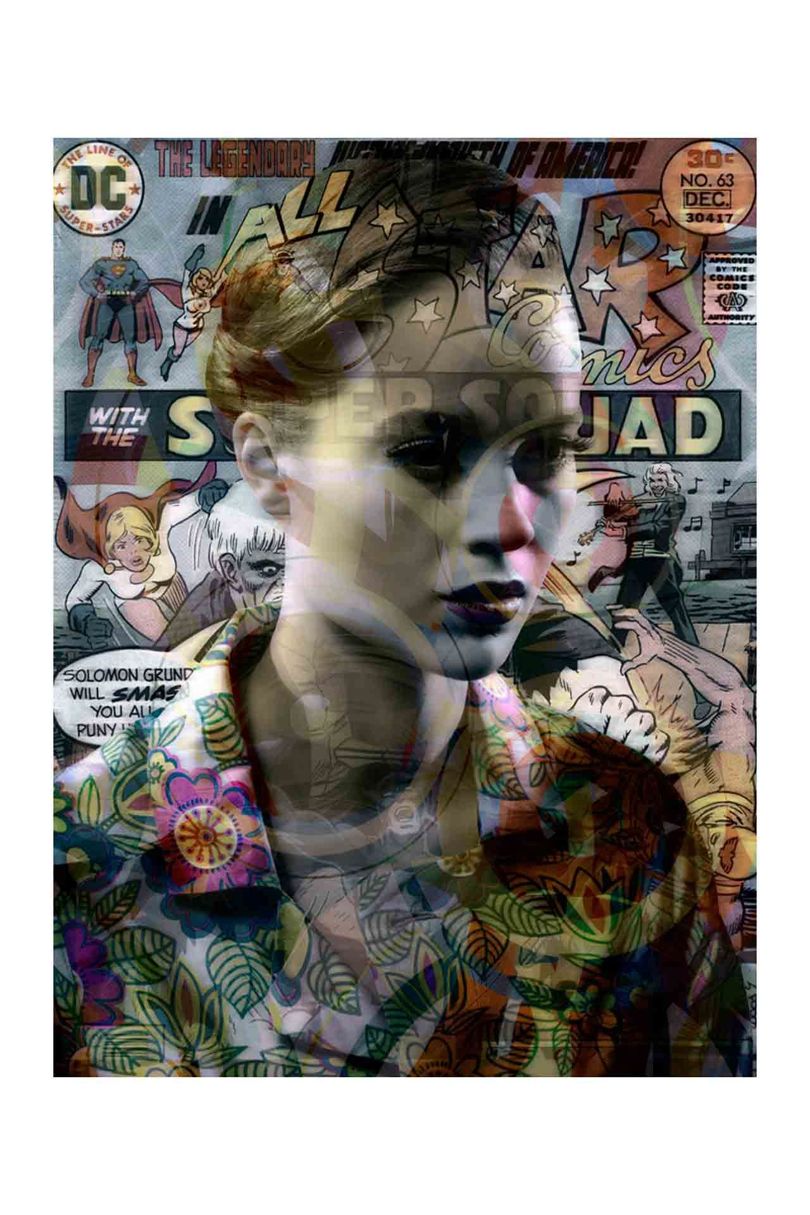 Detail from "Power Girl" from the series All Stars (2016), by Valérie Belin Valérie Belin, courtesy of Galerie Nathalie Obadia/@SuzyMenkesVogue Although the main exhibition in the Grand Palais presents all kinds of photographic inspiration from landscape to portraiture, I looked particularly at fashion. That included classics, such as Norman Parkinson’s “Young Velvets, Young Prices, Hat Fashions” from 1949: four women in softly felted hats, captured on the roof of the former Condé Nast building on Lexington Avenue in New York, against a background of skyscrapers. (Bernheimer Fine Art, Switzerland.) 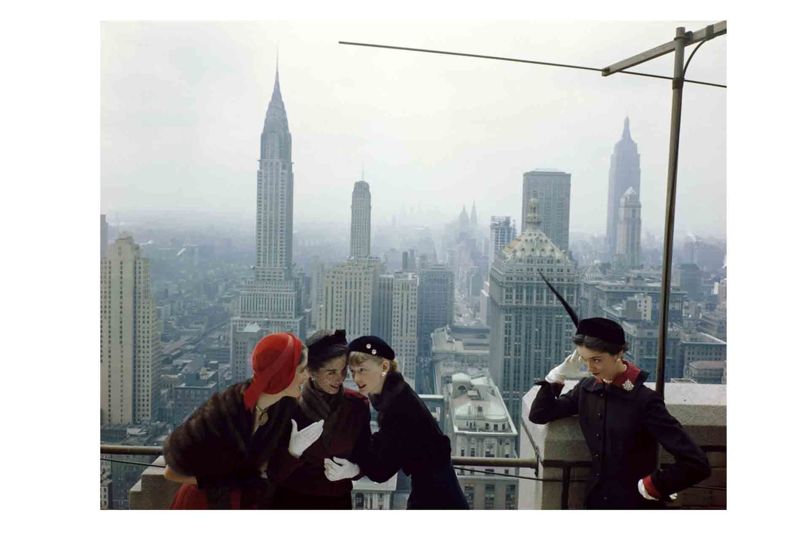 "Young Velvets, Young Prices, Hat Fashions" (1949) by Norman Parkinson Norman Parkinson, courtesy Bernheimer Fine Art But texture in those pre-digital days was missing – as it was in an otherwise fascinating black-and-white contact sheet of David Bowie posing for Helmut Newton in Monte Carlo in 1982; or the famous images by Bert Stern of Marilyn Monroe, “The Last Sitting”, commissioned by Vogue in 1962. (Staley-Wise Gallery, New York.) 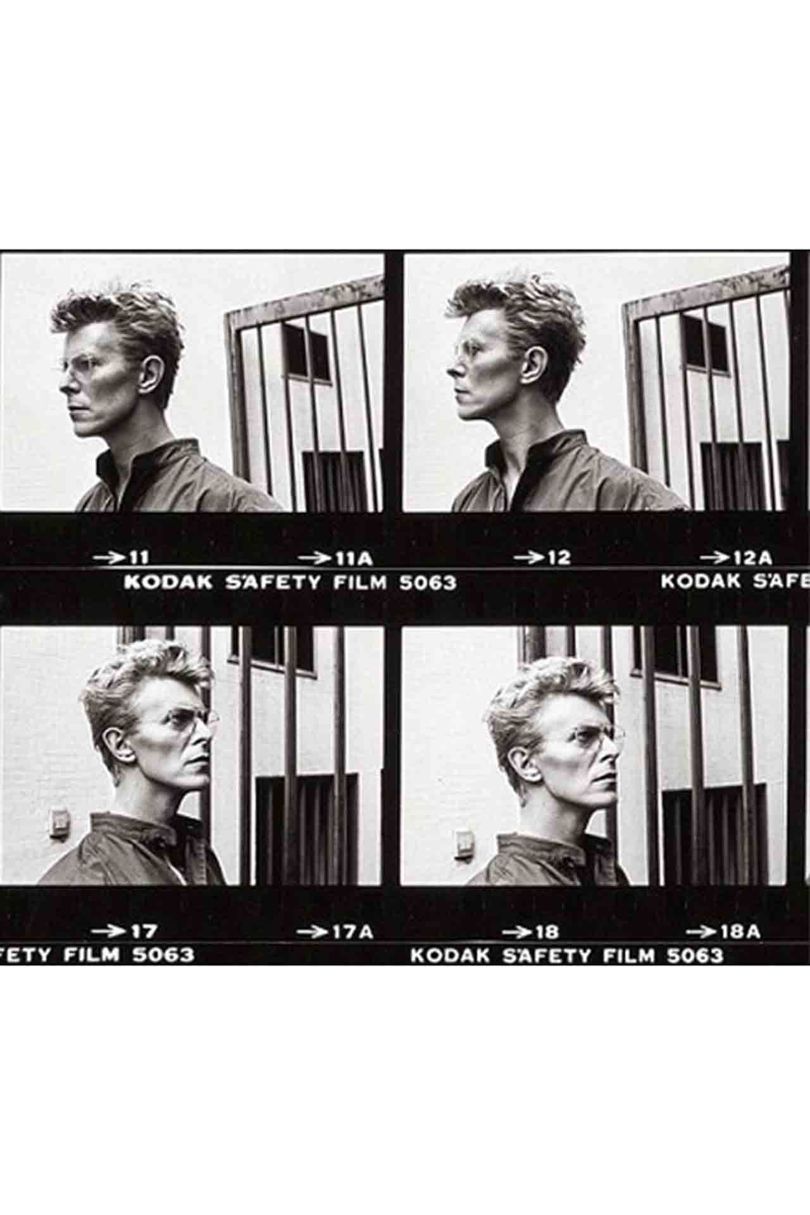 Detail from a contact sheet for Helmut Newton's "David Bowie in Monte Carlo" (1982) Helmut Newton/@SuzyMenkesVogue  Suzy captures Marilyn Monroe captured by Bert Stern in "The Last Sitting" (1962) Bert Stern, courtesy of Staley-Wise Gallery/@SuzyMenkesVogue “Textural” images from modern photographic times come in many different guises – for example, Tina Berning and Michelangelo di Batista’s mixed-media “Lindsey, Woven” from 2016 has the strange effect of eyes glinting through woven fabric while the model’s sensual mouth is just seen through red and black streamers. (Camera Work, Berlin.)  "Lindsey, Woven" (2016) by Tina Berning and Michelangelo Di Battista (mixed media) Tina Berning and Michelangelo Di Battista, courtesy of Camera Work Gallery/@SuzyMenkesVogue Sometimes I was bringing my own imagination to modern techniques of reproduction. “Trace 24-33”, a digital print mixing resin and glass, was a striking multi-media effect from Hiroshi Takizawa (Polka, Paris), while Ljubodrag Andric’s pigment ink print from a series of abstract images of walls, “China #2”, looks like a woven straw mat. (Robert Koch Gallery, San Francisco). 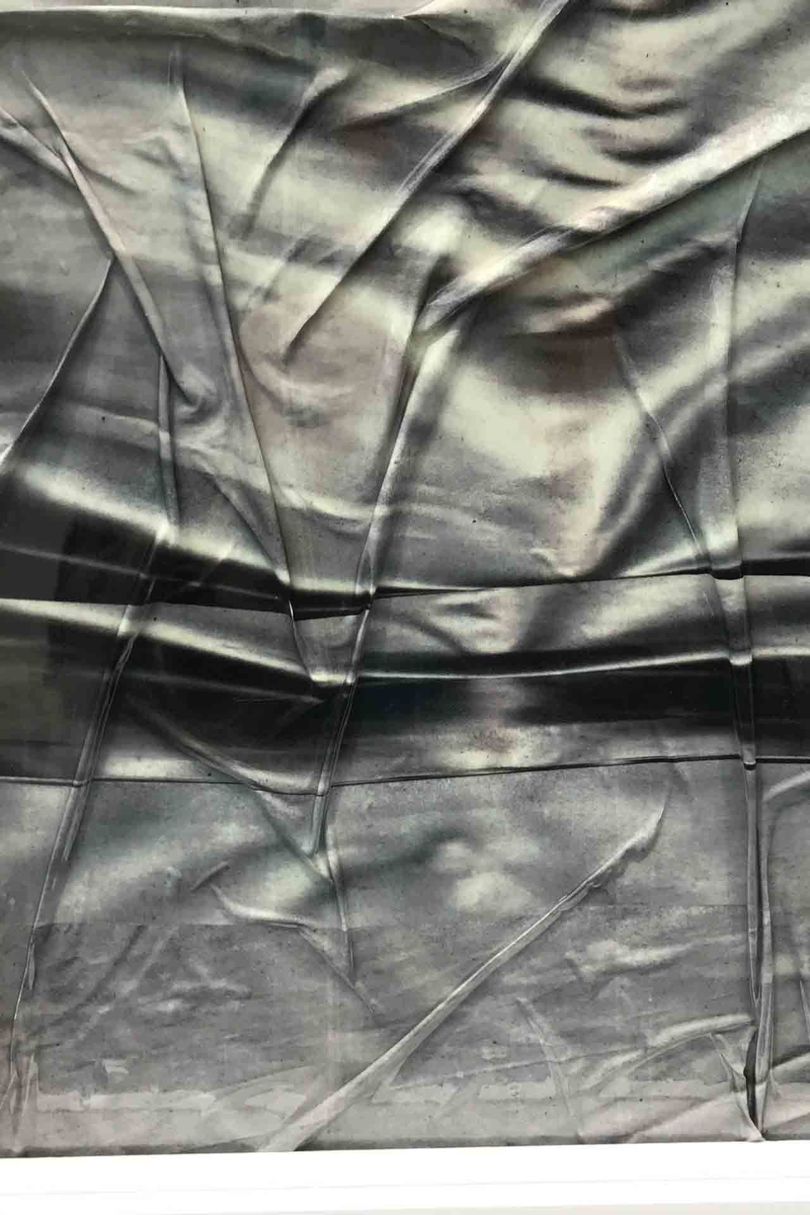 Detail from the series "Trace, 24-33" by Hiroshi Takizawa (digital print, mixed technique, resin and glass) Hiroshi Takizawa, courtesy of Polka Gallery/@SuzyMenkesVogue 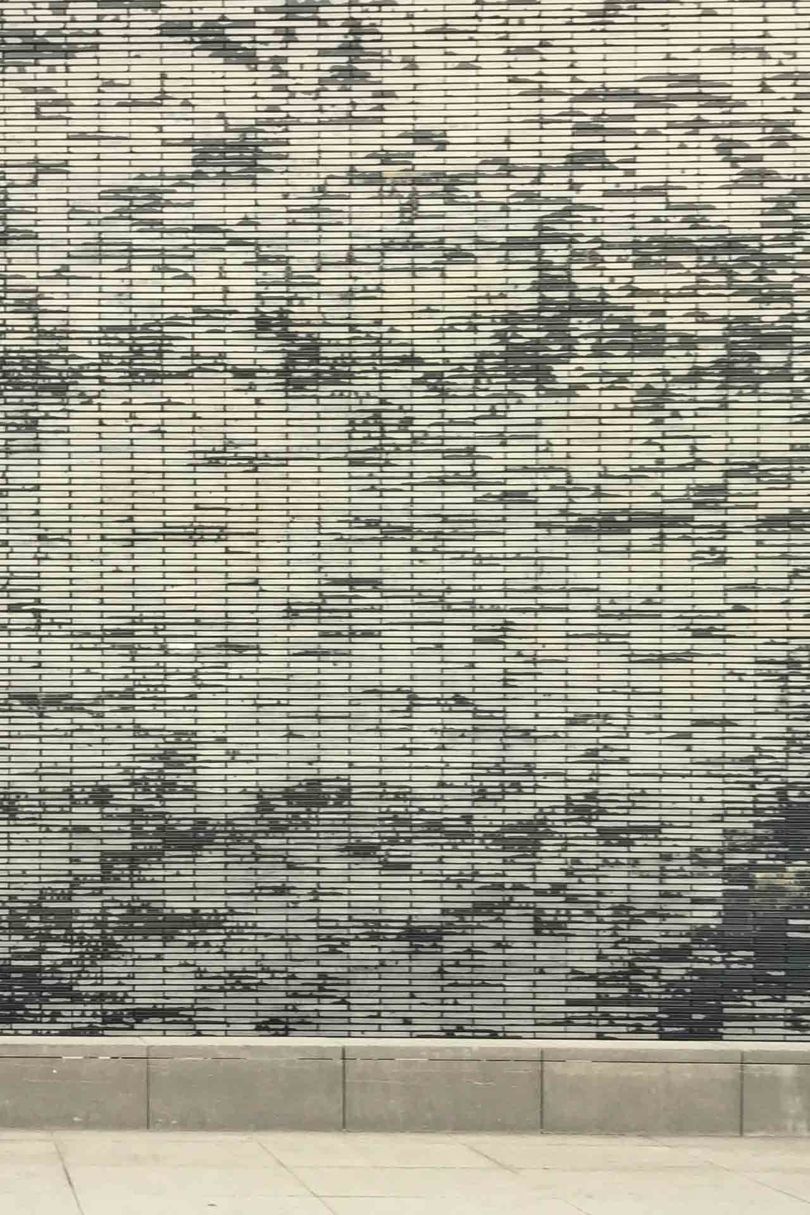 Detail from "China #1" by Ljubodrag Andric (pigment ink print) Ljubodrag Andric, courtesy of Robert Koch Gallery/@SuzyMenkesVogue Occasionally, the three-dimensional effect was not a result of mixing fabric textures, but instead a trick of lighting and film - as in Paolo Roversi’s 1996 chromatic print, “Yelena”, in which three pairs of arms extend from the model’s torso, like a Hindu goddess. (Pace, MacGill Gallery, New York.)  Detail from "Yelena" (1996) by Paolo Roversi (chromogenic print) Paolo Roversi, courtesy of Pace/MacGill Two particular artists caught my eye. First was Nina Katchadourian, whose Lavatory Self-Portraits in the Flemish Style from 2010 is a series of nine photographs, digital images, and video, in which the artist takes self-portraits on her mobile phone wearing headdresses fashioned from paper hand towels and loo roll from airplane toilets. The single light offers stark but effective images. (Catharine Clark Gallery, San Francisco.) 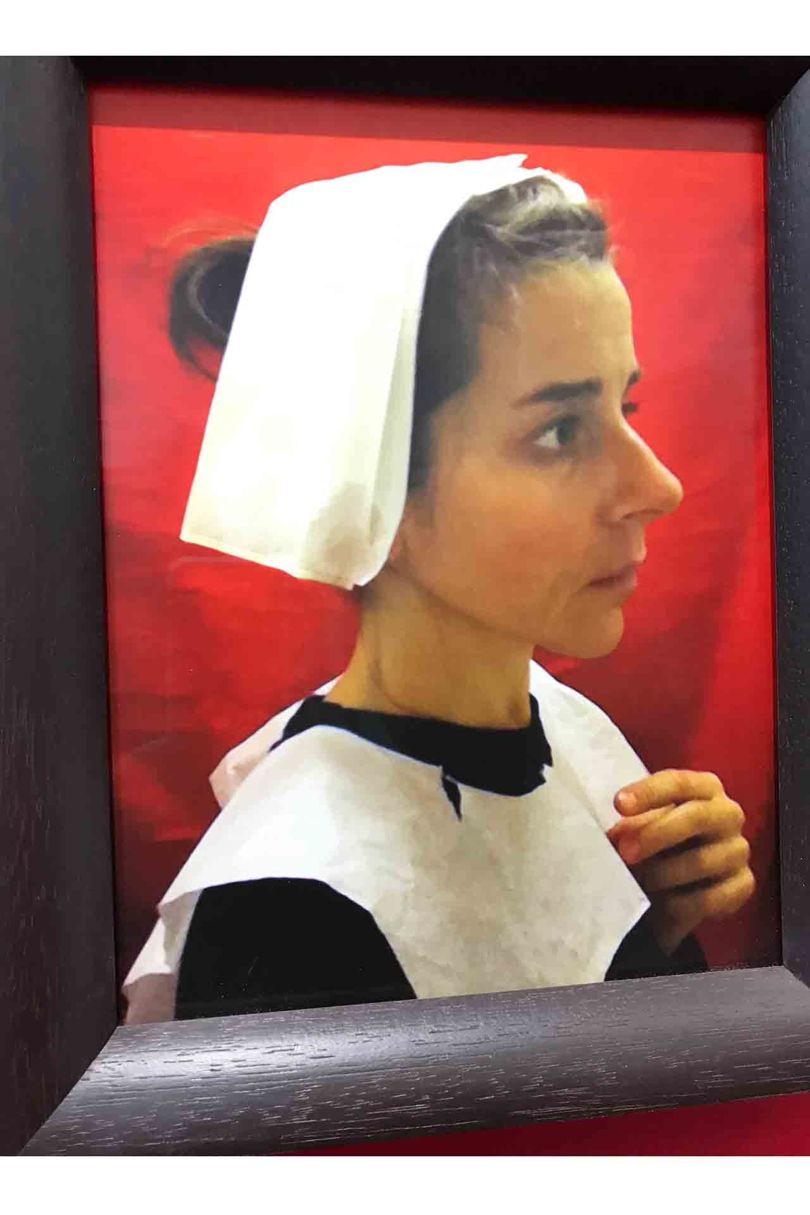 Detail from "Lavatory Self-Portrait in the Flemish Style, Suite #3" (2011) from the Seat Assignment Project (started in 1910, ongoing) by Nina Katchadourian Nina Katchadourian, courtesy of Catharine Clark Gallery/@SuzyMenkesVogue The second, ultimate shock was from Ulla Jokisalo’s ongoing “Headless Women” series (from 2013 onwards), which replaces the heads of graceful female models with those of birds, hedgehogs and other animals, using pigment print and sewing pins. (Gallery Taik Persons, Berlin.) 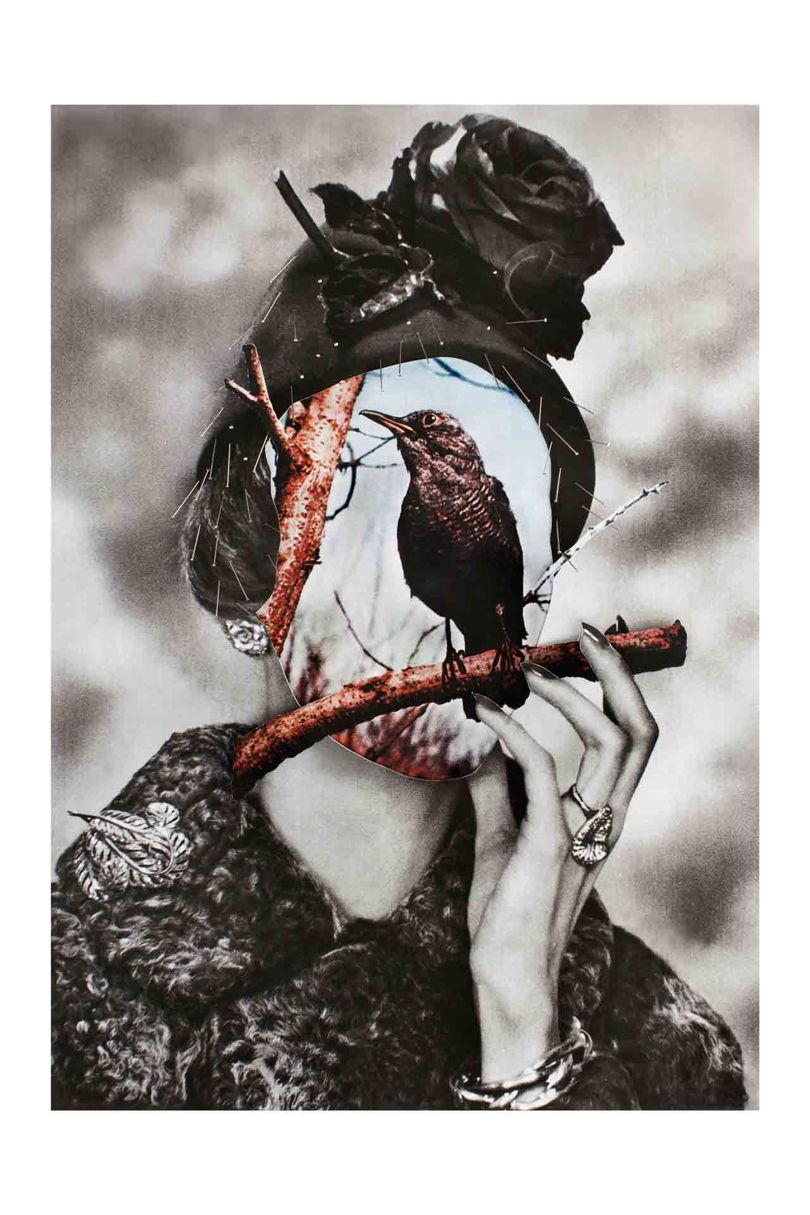 "Puff" (2015) from the Headless Women series (ongoing since 2013) by Ulla Jokisalo (cut-out pigment print and pins) Ulla Jokisalo, courtesy of Gallery Taik Persons There is so much more than serene but familiar beauty at the Grand Palais, proving that Paris Photo has moved fast-forward across its two decades. (责任编辑:admin) |
